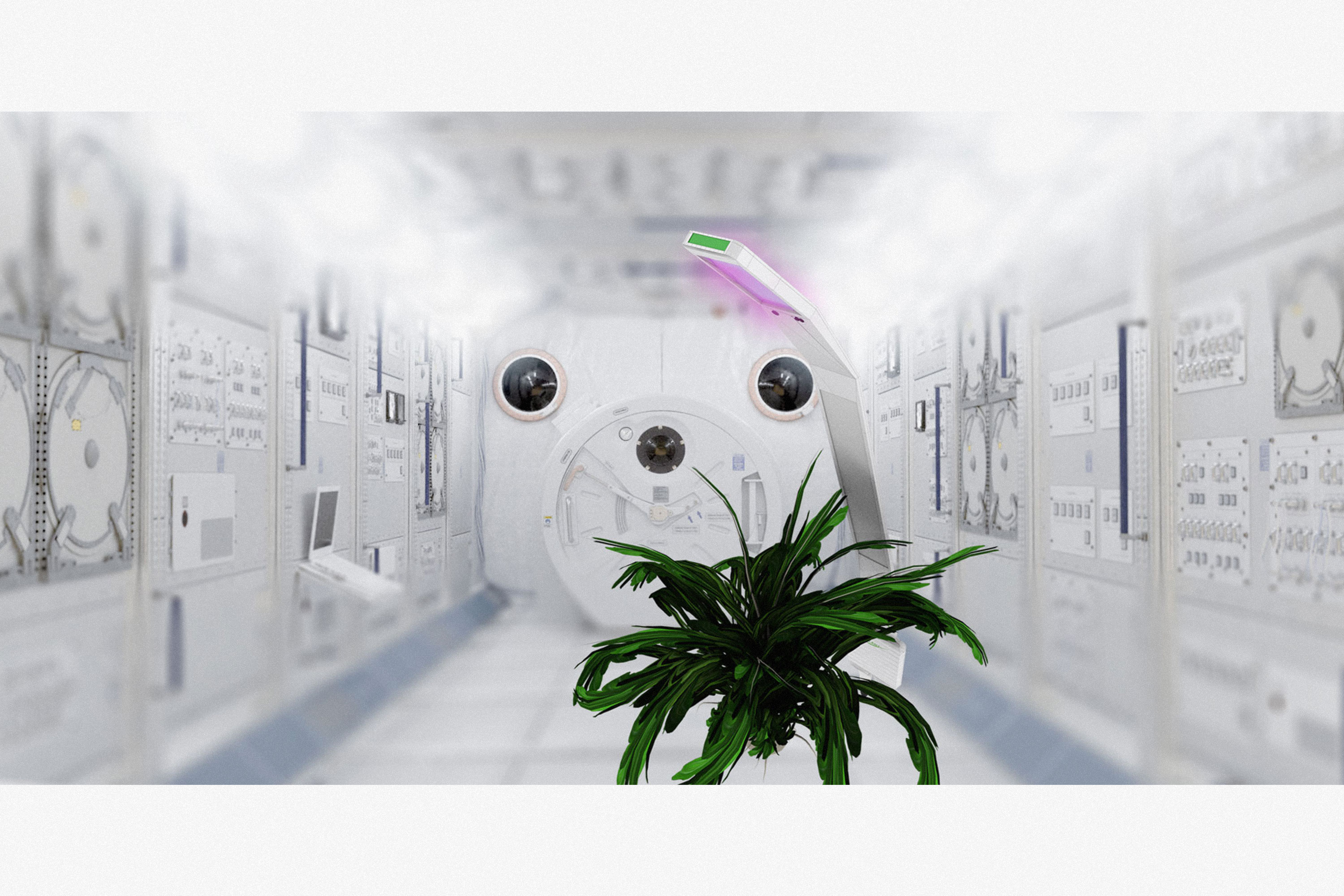
Spaceplant
Plants make People Happier
Augmented Human-Plant Interface (A-HPI)
Speculative design and research project
2013

Abstract:
Boredom, emotional disconnection and an general lack of well being has often been stated as one of the major drawbacks in human space flight, and is considered a major focal point for future long-term space mission. There exist numerous stories and reports of astronauts seeking emotional bonds with objects and plants in their spacecraft. Greenhouses and plant experiments are amongst the most popular assets in space habitats.
This project aims at taking the emotional bonding and interaction with plants to a higher level by augmenting the interaction between human and plant through the introduction of a novel human-plant interface for (long duration mission) astronaut wellbeing in particular, and overall human well-being in general.
Previous plant interaction systems have focused on either human-plant interfaces or plant monitoring systems. Human-plant interfaces introduces concepts to connect human senses and actions with those of plants, giving plants a higher degree of communication.
Many of these projects reside in the artistic field. Plant monitoring systems on the other hand mainly focus on the well being of the plant, the condition of the soil and often combine watering and lighting systems to provide autonomous care taking of plants
or crops.
The Spaceplant project aims at combining those two approaches to propose a novel system that creates a strong bond between human and plant through mutual communication, mutual care taking and mutual monitoring. Spaceplant does this via a monitoring probe
equiped with an array of sensors to monitor the plant’s condition and its environment, and connect this with a user interface and feedback system, creating a two-way communication gateway between human and plant.
Boredom, emotional disconnection and an general lack of well being has often been stated as one of the major drawbacks in human space flight, and is considered a major focal point for future long-term space mission. There exist numerous stories and reports of astronauts seeking emotional bonds with objects and plants in their spacecraft. Greenhouses and plant experiments are amongst the most popular assets in space habitats.
This project aims at taking the emotional bonding and interaction with plants to a higher level by augmenting the interaction between human and plant through the introduction of a novel human-plant interface for (long duration mission) astronaut wellbeing in particular, and overall human well-being in general.
Previous plant interaction systems have focused on either human-plant interfaces or plant monitoring systems. Human-plant interfaces introduces concepts to connect human senses and actions with those of plants, giving plants a higher degree of communication.
Many of these projects reside in the artistic field. Plant monitoring systems on the other hand mainly focus on the well being of the plant, the condition of the soil and often combine watering and lighting systems to provide autonomous care taking of plants
or crops.
The Spaceplant project aims at combining those two approaches to propose a novel system that creates a strong bond between human and plant through mutual communication, mutual care taking and mutual monitoring. Spaceplant does this via a monitoring probe
equiped with an array of sensors to monitor the plant’s condition and its environment, and connect this with a user interface and feedback system, creating a two-way communication gateway between human and plant.








Inspiration
The project drew upon a novel capacitive touch sensor interface as developed by Studio Nand for Disney Research Studios.


Novel at the time, these interfaces are now popular in electronic STEM applications:

Another source of inspiration was the work on interspecimen communication conducted by artist and living systems researcher Ivan Henriques. Specially his Jurema Action Plant triggered my interest.
